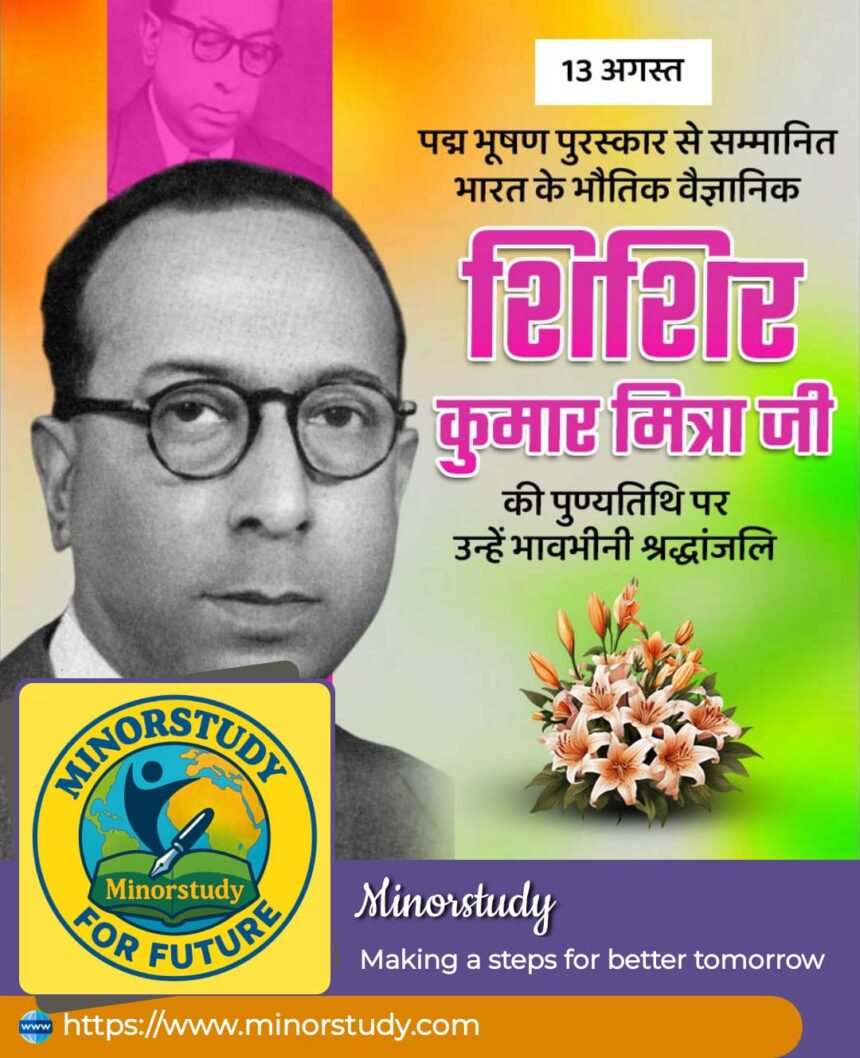Sisir Kumar Mitra: A Visionary Physicist Who Shaped Indian Science
Sisir Kumar Mitra (24 October 1890 – 13 August 1963) was a pioneering Indian physicist whose contributions to radiophysics and atmospheric science have left an indelible mark on the scientific community. Known as the “Doyen of Radio Science in India,” Mitra’s work laid the foundation for modern ionospheric research and wireless communication in the country.
Early Life and Education
Born in Konnagar, Hooghly district, Bengal Presidency (now in West Bengal, India), Mitra hailed from a family that valued education and progressive thinking. His father, Joykrishna Mitra, was a school teacher, and his mother, Saratkumari, was a medical student and later a doctor. The family’s liberal outlook influenced Mitra’s approach to science and education.
Mitra’s academic journey began at Bhagalpur Zilla School, followed by studies at T.N.J. College and Presidency College, Calcutta. In 1912, he earned his M.Sc. in Physics from the University of Calcutta, securing a gold medal for his outstanding performance.
Scientific Contributions
Founding the Field of Ionospheric Science
Mitra’s most significant contribution was in the field of ionospheric science. In 1950, he established the first ionospheric field station at Haringhata, near Kolkata, marking the beginning of systematic studies of the ionosphere in India. His research provided insights into the ionization of the upper atmosphere and its implications for radio wave propagation.
Advancements in Radio Technology
Mitra played a crucial role in developing radio technology in India. He initiated the first course on wireless technology at the University of Calcutta and was instrumental in establishing the Institute of Radio Physics and Electronics. His efforts led to the indigenous production of radio components, reducing India’s dependence on foreign technology.
Academic Leadership
Beyond his research, Mitra was a dedicated educator. He served as a professor at various institutions, including Bankura Christian College, Rajabazar Science College, and the University of Calcutta. His mentorship inspired numerous students who went on to make their own contributions to science.
Awards and Honors
Mitra’s exceptional work earned him several prestigious awards and honors:
Member of the Order of the British Empire (MBE) – 1938
Fellow of the Royal Society (FRS) – 1958
Padma Bhushan – 1962
President of the Indian National Science Academy – 1956
These accolades recognize his outstanding contributions to science and his role in advancing research in India.
Legacy and Recognition
Mitra’s legacy endures through various institutions and recognitions:
Mitra Crater on the Moon: A lunar crater named in his honor acknowledges his contributions to science.
Sisir Kumar Mitra Centre for Space Environment Studies: Established at the University of Calcutta, this center continues his work in atmospheric and space sciences.
Publications: His book, The Upper Atmosphere, remains a seminal work in atmospheric science.
FAQs
Q1: What is Sisir Kumar Mitra known for?
A1: Mitra is renowned for founding ionospheric science in India and advancing radio technology through his research and educational initiatives.
Q2: Where did Mitra establish the first ionospheric field station?
A2: He established the first ionospheric field station at Haringhata, near Kolkata, in 1950.
Q3: What honors did Mitra receive for his contributions?
A3: Mitra received several honors, including the MBE, FRS, and Padma Bhushan, recognizing his significant contributions to science.
Q4: How has Mitra’s work impacted modern science?
A4: Mitra’s research laid the groundwork for modern ionospheric studies and radio communication technologies, influencing subsequent scientific advancements.
Daily Life Impact
Mitra’s work has had a profound impact on daily life, particularly in the realms of communication and education:
Advancements in Communication: His research in radio technology facilitated the development of reliable communication systems, impacting broadcasting and telecommunications.
Educational Influence: As an educator, Mitra inspired generations of scientists, fostering a culture of inquiry and innovation in Indian academia.
Significance to Society
Mitra’s contributions have significantly shaped Indian society:
Scientific Development: His pioneering research has positioned India as a key player in atmospheric and radio sciences.
National Pride: Mitra’s achievements have instilled a sense of pride and inspiration, highlighting the importance of scientific pursuit in national development.
Conclusion
Sisir Kumar Mitra’s life and work exemplify the spirit of scientific inquiry and dedication. His pioneering research and commitment to education have left an enduring legacy that continues to inspire scientists and educators. As we reflect on his contributions, we are reminded of the transformative power of knowledge and the importance of nurturing scientific curiosity for the advancement of society.
Daily Life Impacts:
Enhanced Communication: Mitra’s advancements in radio technology have improved communication systems, affecting daily interactions and information dissemination.
Educational Advancements: His role in establishing science education programs has enriched academic curricula, benefiting students and educators alike.
Significance to Society:
Scientific Leadership: Mitra’s leadership in scientific research has contributed to India’s progress in global scientific endeavors.
Cultural Influence: His achievements have influenced cultural perceptions of science, encouraging a more science-oriented society.









7wepyv